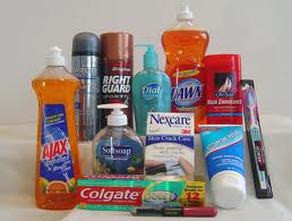Triclosan and increased risk for osteoporosis: Study warns of an association
Women who have high levels of the antibacterial agent triclosan in their urine have worse bone health than other women, new research indicates.

Triclosan, which was recently banned in hand sanitizers, is used in a variety of “consumer goods and personal care products including soaps, hand sanitizers, toothpaste, and mouthwash,” Shaofang Cai, the Second Affiliated Hospital of Xiamen Medical College, China, and colleagues explain in their article, published online June 25, 2019 in the Journal of Clinical Endocrinology and Metabolism.
In animal studies, triclosan has been found to disrupt hormone activity, and in laboratory studies of cell lines, it has caused interstitial collagen accumulation and an increase in trabecular bone.
However, “as far as we know, this is the first epidemiological study to investigate the association [of] triclosan exposure with bone mineral density [BMD] and osteoporosis,” senior author Yingjun Li, PhD, Hangzhou Medical College School of Public Health, China, said in a statement from the Endocrine Society.

Triclosan is a common ingredient in “antibacterial” soaps, acne treatments, face and body washes, toothpaste and deodorants. Read the ingredient labels to be sure.
The group analyzed data from over 1800 adult women who participated in the 2005 to 2010 US National Health and Nutrition Examination Survey (NHANES). Among women in the highest tertile of urinary triclosan level, BMD was lower in the total femur, intertrochanter, and lumbar spine, and the prevalence of osteoporosis in the intertrochanter was more than twofold higher.
“We provided the first evidence,” they report, “that urinary [triclosan] concentration was significantly associated with BMD and osteoporosis in…US adult women.”
The researchers caution that this was an observational study and so cannot show cause and effect.
Triclosan Detected in 75% of the Population
People are exposed to triclosan, Cai and colleagues say, from consumer products, the water supply, or animal or food products.
In 2003 and 2004, about 75% of the US population had detectable levels of triclosan in their urine. Levels ranged from 7.9 nmol/L to 13.1 μmol/L.
In September 2016, the FDA banned triclosan in consumer antiseptic washes, and in December 2017, it banned it in healthcare antiseptics. The FDA took these actions after it determined that manufacturers had not demonstrated that triclosan was “generally recognized as safe and effective” when added to these products.
Most recently, on April 12, 2019, the FDA issued a final rule banning triclosan from consumer hand sanitizers, effective April 13, 2020.
However, as noted in an FDA consumer update on May 16, 2019, “triclosan can be found in many places today. It has been added to many consumer products — including clothing, kitchenware, furniture, and toys — to prevent bacterial contamination.
“Because of that, people’s long-term exposure to triclosan is higher than previously thought, raising concerns about the potential risks associated with the use of this ingredient over a lifetime.”
Does Triclosan Exposure Affect Bone Health?
Cai and colleagues investigated the association between triclosan, BMD, and osteoporosis in American women.
They identified 1848 women aged 20 years or older for whom values regarding these three measures were available from three recent NHANES surveys.
BMD was measured by dual-energy x-ray absorptiometry (DEXA) scans of four femoral regions — total femur, femur neck, trochanter, intertrochanter — and the lumbar spine.
Osteoporosis was diagnosed on the basis of BMD results at any of the four femoral regions.
Urinary triclosan was measured from a spot urine sample using high-performance liquid chromatography–tandem mass spectrometry, the lower limit of detection of which was 2.3 ng/mL.
The mean age of the women was 48 years. Most (72%) were non-Hispanic white; the rest were black (11%), Mexican American (7%), or of other race/ethnicity (10%).
About half (909 women) were postmenopausal (mean age, 62 years). The mean age of the other women was 36 years.
The women were divided into tertiles on the basis of urinary triclosan level.
After adjustment for multiple variables (ie, age, race, education, marital status, smoking, body mass index, physical activity, calcium intake, diabetes, hormone use, and menopause), compared to women in the lowest tertile of urinary triclosan level, those in the highest tertile were more likely to have a lower mean BMD at the total femur (β = –0.016), intertrochanter (β = –0.022), and lumbar spine (β = –0.014). These associations were stronger in postmenopausal women.
After multivariable adjustment, overall, compared to women in the lowest tertile of urinary triclosan level, those in the highest tertile were more than twice as likely to have osteoporosis in the intertrochanter (odds ratio, 2.46).
Among premenopausal women, there were three cases of osteoporosis in the total femur; five in the femur neck; two in the trochanter; and four in intertrochanter.
The study received funding from the National Natural Science Foundation of China and the Medical Science and Technology Project of Zhejiang Province. The authors have disclosed no relevant financial relationships.
J Clin Endocrinol Metab. Published online June 25, 2019. Abstract
_________________________________
Credit: Medscape.com





















